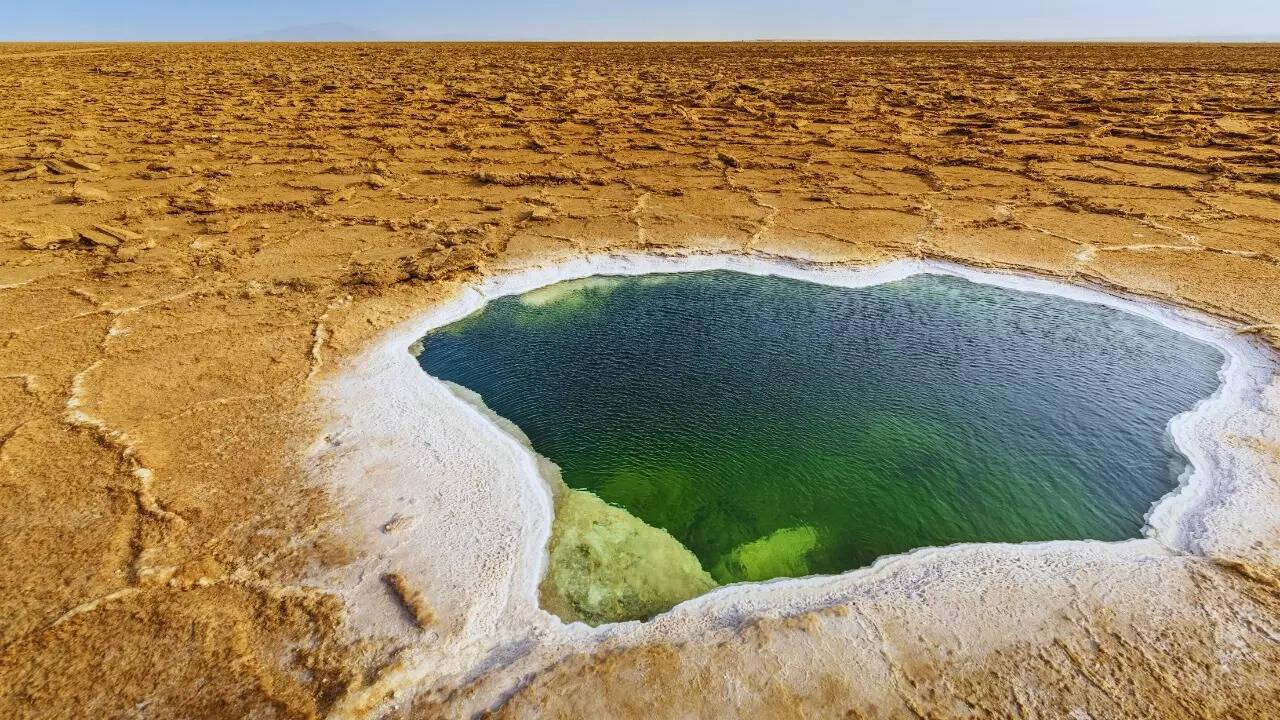 Image Source: Times Of India
Image Source: Times Of India
In a fascinating revelation that has captivated geologists, environmentalists, and curious minds alike, Gaet’ale Pond in Ethiopia’s Danakil Depression has officially been recognized as the lake with the highest salt concentration on Earth. With a staggering salinity level of 43.3 percent, this tiny hypersaline lake surpasses even the famously buoyant Dead Sea and Antarctica’s Don Juan Pond, making it a natural marvel in the world of extreme environments.
The announcement, backed by recent geochemical studies and satellite data, sheds light on the unique conditions that allow Gaet’ale Pond to maintain such an extraordinary salt concentration. Located in one of the hottest and most geologically active regions on the planet, the pond offers scientists a rare glimpse into the chemistry of extremophile ecosystems and the dynamics of hypersaline water bodies.
Key Highlights from the Salinity Rankings
Gaet’ale Pond in Ethiopia tops the global list with 43.3 percent salinity by weight.
It surpasses Don Juan Pond in Antarctica (40 percent) and Lake Retba in Senegal (40 percent).
The Dead Sea, often cited for its high salt content, registers around 33.7 percent.
Ocean water, by comparison, averages just 3.5 percent salinity.
Formation and Location: A Pond Born of Fire and Salt
Volcanic Origins
Gaet’ale Pond was formed by volcanic activity in the Danakil Depression, a tectonically active region in Ethiopia’s Afar Triangle.
The pond emerged after a seismic event in 2005 reopened a hydrothermal vent, releasing mineral-rich fluids into the basin.
Harsh Climate Conditions
The Danakil Depression is one of the hottest places on Earth, with temperatures often exceeding 45 degrees Celsius.
High evaporation rates and minimal freshwater input contribute to the pond’s hypersalinity.
The surrounding landscape is dotted with salt flats, sulfur springs, and acidic pools, creating a surreal and hostile environment.
Chemical Composition and Ecological Significance
Gaet’ale Pond’s water is dominated by magnesium chloride and calcium chloride, unlike the sodium chloride-rich Dead Sea.
These minerals contribute to its extreme salinity and make the pond inhospitable to most life forms.
Only specialized extremophiles—microorganisms adapted to survive in high-salt, high-temperature conditions—can thrive here.
The pond serves as a natural laboratory for studying microbial resilience, geochemical cycles, and planetary analogs.
Comparative Salinity: How Other Lakes Measure Up
Don Juan Pond (Antarctica): 40 percent salinity, remains liquid even at -50 degrees Celsius.
Lake Retba (Senegal): 40 percent, known for its pink hue due to halophilic algae.
Lake Assal (Djibouti): 34.8 percent, commercially mined for salt.
Dead Sea (Israel, Jordan, Palestine): 33.7 percent, famous for its buoyancy and therapeutic mud.
Great Salt Lake (Utah, USA): 31.7 percent in its north arm, varies seasonally.
Scientific and Cultural Importance
Gaet’ale Pond is drawing interest from astrobiologists exploring analogs for Martian environments.
Its unique chemistry may offer clues about early Earth conditions and the potential for life in extreme extraterrestrial settings.
The site is also gaining traction among eco-tourists and photographers, though access remains limited due to its remote and volatile location.
Conclusion
Gaet’ale Pond’s recognition as the world’s saltiest lake is more than a scientific milestone—it’s a testament to Earth’s geological diversity and the resilience of life in extreme conditions. As researchers continue to unlock its secrets, the pond stands as a shimmering symbol of nature’s ability to surprise, challenge, and inspire.
Sources: Jagran Josh, Wikipedia, WorldAtlas
Please get more news
Mindful Pages: 10 Books That Serve As Brain Snacks For A Quiet Evening
Advertisement
Advertisement





